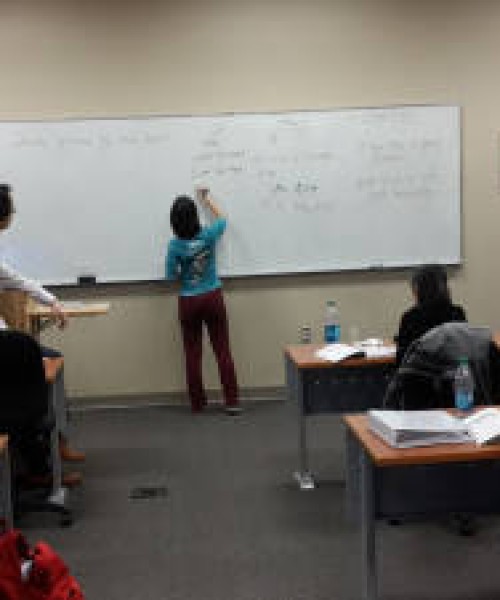INSTRUMENTATION AMPLIFIER
The first stage of EOG bio potential acquisition system is the instrumentation amplifier. An Instrumentation Amplifier is a type of differential amplifier with input buffers, which eliminate the need for input impedance matching and thus make the amplifier particularly suitable for use in measurement and test equipment. Additional characteristics include very low DC offset, low drift, low noise, very high open-loop gain, very high common-mode rejection ratio, and very high input impedances. Basic circuit of an instrumentation amplifier is shown in figure 4. Description: C:\Users\Patterson D'Mello\Desktop\Op-Amp_Instrumentation_Amplifier.svg.png
Figure 4 . Instrumentation amplifier
Instrumentation amplifiers can be built with individual op-amps and precision resistors, but are also available in integrated circuit form from several manufacturers (including Texas Instruments, National Semiconductor, Analog Devices, Linear Technology and Maxim Integrated Products). The Analog Devices AD620 is a low cost, high accuracy instrumentation amplifier that requires only one external resistor to set gains of 1 to 10000. Two AD620 amplifiers have been used one for each channel. The AD620 is a monolithic instrumentation amplifier based on a modification of the classic three op amp approach. The AD620 features 8-lead SOIC and DIP packaging that is smaller than discrete designs and offers lower power (only 1.3 mA max supply current), making it a good fit for battery powered, portable (or remote) applications. AD620 has low noise, low input bias current and low power. Due to these features of the AD620, it has been used for medical applications such as ECG and non-invasive blood pressure monitors. The pin configuration of AD620 is shown in figure 4.
Figure 5. AD620 Pin diagram
The design issues of the overall systems are explained below:
Low Pass Filter and High pass Filter
A low-pass filter passes low frequency components in the signal but rejects the high frequency components. The transition from stop band to pass band occurs at cut-off frequency. The High pass filter passes high frequency components and rejects the low frequency components. Band pass filter is designed combining the two filters.
Figure 6. (a) Low pass filter , (b) High pass filter
The designed circuit includes the low pass filter with the cutoff of 30 Hz. Based on the the useful bandwidth of EOG the band pass filter edge frequencies are taken as from 0.5Hz to 30Hz. The second order Butterworth filters are used since it gives better selectivity of signal than in first order filter. The TL084 series of ICs are high speed J-FET input quad operational amplifiers incorporating well matched, high voltage J-FET and bipolar transistors in a monolithic integrated circuit. The devices feature high slew rates, low input bias and offset currents, high input impedance and low offset voltage temperature.
A1. Design procedure for Low pass filter
1. Define the cut-off frequency Fc = 30 Hz, according to the requirement.
2. Choose an appropriate value for the capacitor C1 = 0.1uF. The choice of capacitor was in terms of lower cost and to get better performance with respect to the frequencies at which they worked.
3. Calculate the value of the capacitor C2. C2 = 0.2μF.
4. Calculate the value of a resistance R1=R2=R, which is obtained by using:
= 37.51 KΩ
5. R3 is taken as 2R. R3 = 2 * (37.51KΩ) = 75KΩ
Figure 7. Low pass Filter Circuit
代写论文一般多少钱 Virtual Instrumentation For Acquisition Computer Science Essay










